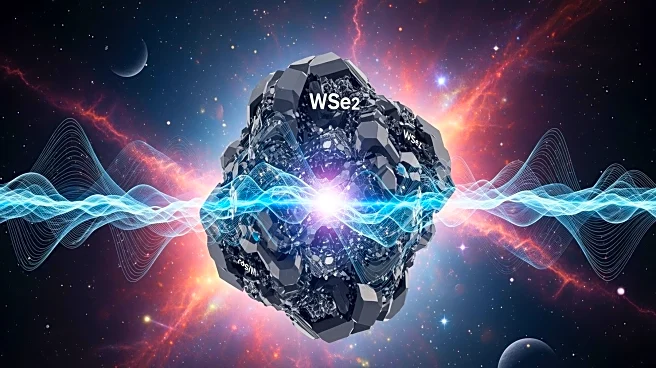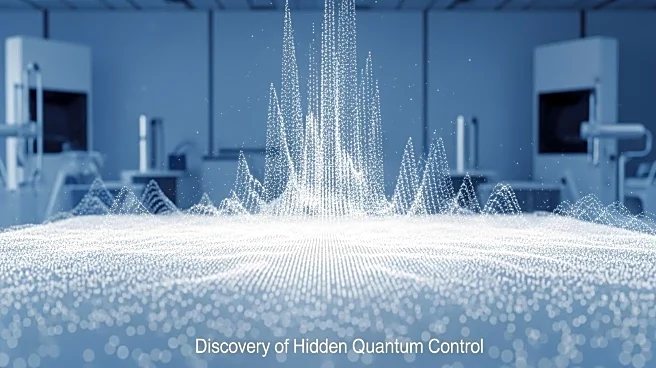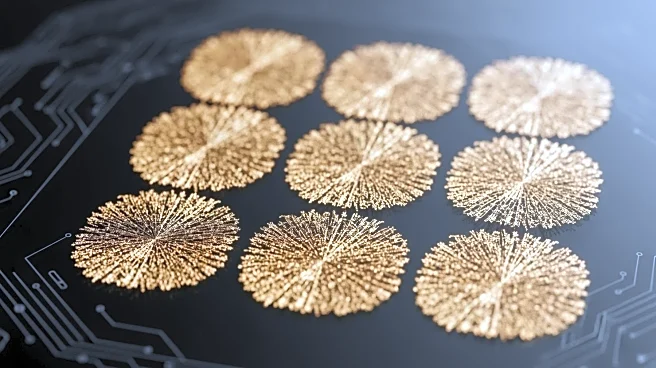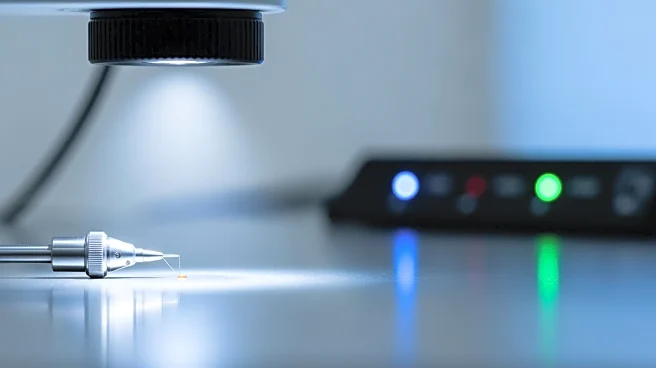What's Happening?
Researchers have developed a microscopic framework to enhance the radiative emission of dark excitons in WSe2 monolayers using plasmonic effects. The study models excitonic states and analyzes the local electromagnetic field enhancement near a metallic
tip, facilitating radiative recombination. This approach provides insights into controlling dark exciton emission and engineering radiative lifetimes in 2D materials. The research employs the Bethe-Salpeter Equation and Wannier-Mott model to accurately capture excitonic effects, offering a detailed understanding of exciton-photon interactions.
Why It's Important?
Enhancing the emission of dark excitons has significant implications for the development of optoelectronic devices, potentially leading to more efficient light-emitting applications. This research could pave the way for advancements in 2D semiconductor technology, impacting industries such as telecommunications and computing. The ability to control exciton emission and radiative lifetimes could lead to breakthroughs in material science, influencing the design and functionality of future electronic devices.
What's Next?
Future research will focus on refining the exciton-photon interaction model and exploring the application of this technique to other 2D materials. The study aims to improve the understanding of plasmonic effects and their role in enhancing excitonic properties. Continued collaboration between academia and industry could accelerate the development of new technologies based on these findings.
Beyond the Headlines
This research highlights the potential for plasmonic effects to revolutionize material science, offering new avenues for innovation in electronic and photonic devices. The ethical considerations involve ensuring that advancements in technology are accessible and beneficial to society as a whole. Culturally, the study may influence perceptions of 2D materials and their applications, driving interest and investment in this field.













